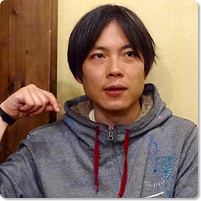Starting out from live performance houses with no audience
- We would like to begin by asking you from what point in your life you began to become interested in creating things.
-
In my early years of elementary school, we lived on the outermost island of the Amakusa Islands of Kumamoto Prefecture on Japan’s western island of Kyushu. In our house there was no television, and all there was around me was just the natural world of insects and animals, the mountains and rivers, and the sea. So, those childhood years weren’t spent playing soccer or baseball with the other kids, I was always playing alone. Calling it “exploration,” I would go out and explored cliffs, caves and things like that, and I often got into very dangerous situations and nearly got myself killed a number of times (laughs). I would pick up and feel things around me like stones and make toys out of them as I pleased.I lived in Osaka from the time I started university there in 1998. At that time I was making video works, pretending I was making movies. At the time, Osaka had a popular “club culture” and there were a lot clubs, large and small, so it was relatively easy to make your own events without needing much money at all. And so, that is when I started taking sundry things to those places and making performances with them.
- So, you began not from video or [visual] art works but from performance?
- Yes. At the time I was making 8mm films, but I quit because the cost of the film and developing it was so expensive. It also took money to rent out a gallery to show your works. But if you used a club that specialized as an event base, it was possible to get a number of people together to share the rental fee and do things inexpensively, and if a fairly good number of people came to see it, it was pretty easy to make ends meet, to pay for the cost of putting on the event. So, I naturally started doing performance works. That said, however, I am not the type that liked to get up in front of an audience and acting or perform something, so I would bring in a bunch of junk (things) and set up something that people could just come in and look at. In other words, it was the same type of thing I am doing now.
- At the time, were there any artists that influenced you?
- One clear influence was the Japanese alternative music band BOREDOMS. If you were in Osaka at the time it was an unavoidable influence. I believe it was BOREDOMS that started the direction that fueled the Osaka alternative rock boom that continued from the 1990s into the 2000s. Their activities were unique and varied, and while still active as an independent group they won explosive popularity overseas as well.
A friend of mine in my college days once told me that he was involved in an event that made an offer to the leader of BOREDOMS, Eye Yamatsuka, to perform, and his answer was that he would if they would prepare a guitar[ist], bass[ist] and a washing machine for him. When I heard that, I got really excited, because I imagined a guitar and bass playing noise at tremendous volume in the image of being inside a washing machine while its running, and I thought, Wow, can people do such a thing? And I felt this great sense of freedom, that you could do anything you wanted.As it turned out, that event wasn’t able to have Yamatsuka perform, so it remains a mystery what he was actually planning to do with washing machine, guitar and bass. There was a real feeling of freedom to the activities of BOREDOMS and the surrounding members that created a very refreshing atmosphere. And I believe that I was greatly influenced by them in that sense too. Of course, I also liked their sound, and I often listened to their CDs. If we had been closer to their age, there might have mutual opposition, but since we were far enough away in age (younger), we were able to appreciate their freedom naturally.- Was there an atmosphere of freedom in Osaka from the latter half of the 1990s into the first half of the 2000s of the type that BOREDOMS represented?
- I think there was, very much so. Not only in the clubs and the live performance houses, but there were also small bars and cafes and galleries here and there that would let you do live performances, and there were a lot of artists doing some rather difficult-to-understand music at those places. But it was mostly people who were doing the music and few people coming to see (listen to) the performances, the audience was really small. And when there is little or no audience, it becomes of necessity a situation where the performers are showing their new stuff to each other on a one-time basis, sort of like a magicians showing off their tricks to each other. And in this kind of experience we were able to learn about new possibilities of things to do and new discoveries of interesting things. The dancer Yoko Higashino ran a bar named Café Q, and I was among those who would often perform there. In fact, the first I did an all-night live event with some friends, there was not a single person who came to see it (laughs).
At the time, I would accept any offer to do anything, no matter who it came from or what the conditions were. There would be times when you would ask yourself. Why in the world am I doing this? But once you actually get to the place and start doing the gig, there would almost always be unexpected discoveries and new encounters. So, I would never put all my trust in my own judgments or preconceptions, but to take any job that came my way no matter what.- Was it for you a process of enjoying the place and environment and things that were there to work with, or perhaps the process of negotiating the set of limitations that might be imposed by a specific project?
- Well, yes. Having a set of restrictions or limitations you have to work within will make things easier. Or you might say that having no restrictions placed on you will make it harder to narrow down the objectives and aims. Specific environments and objects will always offer you hints for developing ideas.
The encounter with improvisational music
- In 2002, the City of Osaka launched the “Shinsekai Arts Park Project” that provided artists with working spaces in vacant shop facilities in Festival Gate (an urban style complex containing an amusement park and shops). As part of this project, you were involved from the start in the live space BRIDGE (led by guitarist and improvisational musician Kazuhisa Uchihashi).
-
With the opening of BRIDGE in 2002, it became the venue for the improvisational music festival F.B.I. (Festival beyond Innocence), which had previously been held in Kobe. I wasn’t a known figure at the time but Uchihashi kindly asked me to participate, and I jumped in on short notice to perform on the same program as such true pioneers of the alternative music movement as Keiji Haino, Akio Suzuki and Masonna. So this turned out to be an event where I was exposed to an impressive deluge of unique and individualistic performances. As for myself, I had come to the event not fully understanding the fact that it was an event organized by F.B.I. with a focus on improvisational music, but when the musicians I met there told me that I had given a good “performance” (using the Japanese word
enso
which is the word used for music performances, not the word for performance art), I realized for the first time that the things I was doing could indeed be called performance in the musical sense.From around this time, I was getting invitations to perform in a variety of events, large and small, and no matter where I performed I had the feeling that I was really out of place. But since I understood that what I would be doing would always be different from what the people there would be expecting, I enjoyed the process of developing my own methods for creating works that the people would enjoy and atmosphere that would enable everyone to get into the performance.Also, in the first half of the 2000s there was an arts center called Osaka Arts-Aporia based in the redbrick warehouses of Osaka harbor that had a “Sound Art Program” for artists pursuing experimental new forms of sound expression. And when I began getting invited regularly to performances there, invitations for me to do displays (installations) at art museums and galleries began to grow in number little by little.
- By the way, Akio Suzuki (b. 1941), who was the pioneer of sound art in Japan, was also active at BRIDGE and Osaka Arts-Aporia. Since you are also seen as a sound artist at times, were you influenced by him as a pioneer of the art?
- Yes, I was of course. And, as a true pioneer, Suzuki-san was in a class by himself (laughs). I was very much surprised by the installation he did in Wakayama in 2005. The installation consisted of bamboo he had cut sections at each of the joints (nodes) and simply lined the pieces up, and although no sound was being made with the bamboo, it was somehow very musical. It was a work that viewers were allowed to touch, but even without touching (sounding) it, you could imagine the bamboo producing rich sounds. The cut section faces were truly beautiful and one couldn’t help but imagine that the artist had made each cut carefully with a handsaw. I don’t know if you could call the things I do “sound art,” but I do think it is my nature to listen to spaces, the positioning of things in a space and the materials of things as sound. When I saw the work by Walter De Maria at Naoshima, the materials and shapes and the positioning of pieces gave me a feeling of exceptionally wonderful music.
- What kind of performances did you do early in your career?
- I would make contraptions, take them to the venue and run them and do things like watch them until they broke down or share the experience with the audience (visitors) of watching the changes that took place in the materials they were made of. One of the materials (substances) that I have used from the beginning and to this day is water. In the case of stone or wood, for example, it would take months, or years, before you could see any kind of changes occurring through the processes of wearing or aging, but with water it can change to a gas or liquid or solid in only a short time. So I can show an audience the phenomena from beginning to end.
- Do you also see the people watching as entities that cause some forms of phenomena?
- Yes, I do. For example, if the people are walking around, they will suddenly stop moving if the space suddenly goes completely dark, or if a big sound rings out, or if the surroundings suddenly become completely silent. If a person is listening intently to very minute sounds or following minute motions and suddenly a loud sound erupts, they will instinctively bend or crouch down. If there is a hole in a low position, people will bend down to look into it. If there is something on the ceiling they will look up. It is interesting to create an environment where third persons can look down from above with a bird’s eye view on the reactions of people moving around in such ways. When a third person looks down on such an accumulation of these ordinary movements, it can take on a mysterious aspect and they become interested and start to wonder, what is happening there? And as time goes on, the mystery begins to unravel and you start to understand what is happening, and doesn’t that process make the work more powerful than if it were explained to you in writing or in words? I feel that this is a sound and healthy way of looking at things.
Phenomena created by people
- What were the epoch-making works that got you started doing performances with groups?
-
It was actually a number of things going on in parallel, like participating in the work “Teiden (black-out) EXPO” performed at the opening of the International Festival for Arts and Media Yokohama in 2009. Among them, I think one of the biggest influences was working with the musicians Tenniscoats from around July of 2006. They had an ability to immediately get the people at the site involved. When I toured with them, I saw how, wherever they went, they easily got the people at the venue to come up on stage with them. I found that very interesting and at my own live performances I started improvising ways to get people like the organizer or the ticket-takers or other staff people to get involved in the performance.One case where I got the audience involved was a performance in 2010 that we did simultaneously at exhibition venues at the Kobe Guggenheim House and the Aichi Triennale. I was at the Nagoya (Aichi) exhibition hall and made a long-distance (broadcast) appearance at the Light Music and Jamboree 3 event at the Guggenheim House. I had the Kobe audience go out in the garden and dig with shovels under a tree until they gradually began to hear the voices of the Nagoya audience singing. I had buried speakers in the ground beforehand.At the Nagoya venue, I made the hall completely darks so that all of the audience could sing without embarrassment. I was connected to our collaborator in Kobe by phone so that they could keep us informed about the goings-on there, and we communicated it to the audience singing in Nagoya be writing the reports on a white board and illuminating it from time to time. The reports said, “We have now dug about 20 cm.” “We are beginning to hear the voices.” “The people here don’t know when they are going to be able to hear the singing, so they have started wandering around.” Hearing these reactions of the audience in Kobe, the people in Nagoya began singing louder and louder, and at the end it was quite a loud chorus of singing, which was very interesting. An acquaintance of mine who was there by the venue in Kobe said it was like listening to the voices of ghosts or spirits.
- Early on it was staff that you were getting involved in your performances rather than audience though, was it?
- That is still the case. The camera people who will be recording the event will take positions in front of the audience, and at exhibitions you will have security people who will do things like make sure the viewers don’t get too close to the artworks, won’t you? Since there is nothing interesting about situations that create the kind of hierarchy in which the artists and the art works are the top echelon and the audience has to obey certain rules in order to maintain their [lower] position in the hierarchy, I am thinking each time about possible ways to break that hierarchy down. And this has led me to the conclusion that the easiest way to do it is to get the staff involved so that they become a part of the performance or exhibition. I want to create the kind of flat playing field where there are no boundaries between the people and the things or the works and the audiences.
- So, you think everything within the world created by a work should be equal?
- When you say it like that it sounds like I must have some kind of utopian ideal, but what I want to say with my works is nothing related to any kind of political philosophy or community ideology. Rather, what I have in mind is a condition where all the entities can coexist independently. I am not talking about ideals but about conditions that I know are possible within a work and the reality that I have seen people living like that all around the world.
In today’s world, there are strong and large forces working to divide people, but with your values and individual actions it is possible to keep resisting those forces, and I think it is important that we continue to remain separate [individuals]. Because, If you gather together into groups carelessly, you run the risk of all being caught and swept aside at once, but even in the case of challenges that you might lose even when you battle in numbers, if there are a lot of small individuals holding out here and there, no one can never get rid of them (us) all.- Where there any other works that were epoch-making for you?
- In March of 2008, I did a work at the ARCUS artist residence for creative work in Moriya City, Ibaraki Prefecture that began at sunset and lasted until dawn. The work’s title was Gate . The contents were somewhere between an exhibition and a performance, and it consisted of me making installations in the various rooms of a building that had formerly been an elementary school all through the night and the audience watched as the installations (exhibits) continued to change in appearance. Since the local bus line stopped running early in the evening, the people who had come to see the work, the audience found themselves unable to leave and ended up spending the whole night with me as I worked. If they got tired they could rest in the night watchman’s room, and if they got hungry that could eat a meal in the home economics room. I had invited some guest performers and we would write on the blackboards, “From such-and-such a time there will be a performance in the such-and-such room,” and we would make announcements on the school public address system, and when we did, people would begin to gather from here and there to see the performances. I thought it was a good work, and I still do.
- In what sense?
- Rather than thinking about works within the conventional frameworks of an exhibition or a performance, I think in terms of how to show a work, the mode of presentation I want, and I think that in the case of my work Gate , I think I was able to create a line of progression (order) the suited the work especially well. The set-up period before the performance was short, just one or two days, and I decided to do the actual performance just on two days. The materials used in the installation pieces I built were unstable substances. On the first and second days the state of the contents kept changing, including the daytime hours when the exhibit isn’t open, so in effect it was actually one long two-day performance. It was the season when the cherry blossoms were blooming, and when morning came at the end of the second night of the performance, everything, including the visitors, seemed to scatter across the schoolyard with strange tension (intensity).
Creating lines of progression (order) that make people feel comfortable as individuals
- You use different forms of expression, including exhibitions, performance art and live performance sessions. What determines which you will use on any given occasion?
- I am just using the designation that the organizers give me, but if they say it will be an exhibition, I may do something closer to a performance, and the opposite is true as well. The attitude of the audience will be different when they think they are coming to see an exhibition and when they think they are coming to see a performance. For example, if you say it is a performance, people assume that it will have a beginning and an end, as they say, an “Introduction, development, turn and conclusion,” or at least some kind of development over time. So, I think it is good if I can present something in a format that fits the circumstances, while from time to time taking advantage of the audience’s expectations in unexpected ways. The way you use such conventions and designations for defining the work can be part of the “line of progression (order)” you use in presenting the work.
- Are you interested in using a “line of progression (order)” that reverses the context by making people who have come with the intention of seeing an exhibition suddenly find that instead they are the ones being watched?
-
The work “To make viewing being viewed is to make being viewed into viewing” that I created at Kanazawa’s 21st Century Museum of Contemporary Art is one that used that concept directly as the work’s title. In the museum’s courtyard garden there was a big moving object, and there was a sort of glass case sticking out into the courtyard that I put a microphone in. There was no explanation given or posted there, but it gave the impression that you could control the object by giving instructions via the microphone, so people who came to see it naturally entered the glass case and said into the microphone things like “Move.” Or shouted “Wa!” in an attempt to move the object. But in fact, there was no cause-and-effect mechanism whatsoever linking the microphone and the object.Some people would speak into the microphone and say, “Why doesn’t it move?”, and if it just happened that the timing of its motion coincided with the direction someone gave into the microphone, they would say happily, “Wow, I did it.” And because their voices were being broadcast in a different gallery of the exhibition, the visitors would realize later that their voices had been broadcast too. The curator of this exhibition made an IC recording of the voices for me, and when I listened to them, it was really interesting. There are about six hours of these tapes, and listening to it all, I never got bored. These voices that come out of the visitors completely unsolicited were completely different from the kind of voices you would get if you held out a microphone to someone and said, “Why don’t you say something for us,” and the people would be conscious of the fact that they were being heard and seen.
- Is it the unselfconscious state when people are oblivious to how they or their actions might look to others that is interesting? Is it that you want your works to show, to express the existence of people or things in their natural state?
- I like the kinds of things that people do unconsciously, and actions that just come out naturally. The things that show a person as he or she is, things like their habits and peculiarities, their customary patterns of conduct in daily life and such. Also things like moments when a person is absorbed in something or concentrating so hard on something that they forget about other things they should be aware of, or when they are trying hard to do something but can’t. For example, in the band “Oto-asobi no Kai” made up mainly of mentally challenged children, there are some who act as if they are big star the moment they get up on stage and others who are completely oblivious to the fact that they are being watched, and there is beauty in them both. There are also members that will wander off somewhere even though it is time for them to go on stage. There are others who will not wander off but stay on stage until everyone applauds and tells them they did a good job, but that’s not what interests me. Rather, what fascinates me is the child that wanders off the stage during a performance, and I think it is my job to overturn that point of view.
- It is easier to create an order or system based on the idea that it feels comfortable being the same as everyone. But in fact, we should be thinking about systems that make it feel good to be themselves, shouldn’t we?
- Yes, because not everyone feels comfortable being the same as everyone else. In my works, when I feel that everyone is beginning to get a sense of being as one, or when a sense of unity is beginning to envelope the venue, I maintain a balance by changing direction to prevent that from happening. I believe that people are all different and that by forming groups based on that assumption, we can coexist. However, there is an underlying pressure toward harmony based on conformity in groups today, so perhaps I want to first of all break down that pressure. Since I originally started out in places where there was no audience, I am not afraid of being isolated. On the other hand, I know that there are at least 30 to 50 people around the world who really like and understand what I am doing, and that is enough for me to enjoy what I do and keep on living like this!
Today, in the world of art as well, there is a very large force at work, and if I am not careful, I might become part of that force. But what I am thinking is that if possible I want to avoid that big and powerful force and find a different method. And when at times I have a difficult time making a decision, I always chose to move in the direction of things small and powerless. When I don’t know what to do, I am certain that I won’t make mistakes in the direction of my activities if I make certain to focus on the small things around me.
Exhibitions that make the venue “age 0”
- In February 2014, you held an exhibition titled “Age 0” in the Sanno District of Nishinari-ku, Osaka as part of the “Breaker Project” of art projects held around the city of Osaka. It was a project in which art works were executed here and there in old houses of cultural importance, old sections of commercial districts and places like the Tobita Shinchi where the old red light district used to be.
- What I did in that district was a three-year project from 2011 to 2014. The first year I held an exhibit titled “Little things that look big” at an old apartment building named Fukuju-so. The second year I did an exhibition that used closed vacant houses and only informed local residents via community circulars about the exhibits. The third is when I did the “Age 0” exhibition. There are many old houses in the Sanno district, and there are also old vacant houses with the roofs collapsing and walls and floors crumbling. The local residents are embarrassed that there are houses like that in their neighborhood, so I felt it was important to share with them the idea the houses that they didn’t want outsiders to see could, with a change of values, could be seen as something interesting.
- What was the reaction of the residents like?
- Naturally, there was no way that they were going to react right away by saying that my work was “interesting.” To be honest, I am not expecting people to try to understand my works. I am just satisfied if they see that this person (me) is serious about what he is doing. It is enough for me if, even though they don’t know what I am trying to do, they are willing to let me try and see what happens. It is a district with an atmosphere that makes it a bit difficult for strangers to enter, but once you get up the courage to go in, you will find it almost strange how quickly you can become friendly with the people and shorten the distance between you and them.
- I was there with the map to walk the course through the installations and there were local residents all along the way to offer us assistance and directions, so I never had time to get lost (laughs).
-
That’s understandable, because there was even a local woman who independently took the initiative to start gathering people and giving them tours of the exhibits. I also heard that when it started raining some visitors were offered a place to sit out the rain by the local residents. So, every visitor had a different experience. Although it was an exhibition, there was no signs or indications of where the exhibits were, no open or closed signs. There was the general format that it was an exhibition where visitors walk around the town to a number of different exhibits, but the maps we handed out were all different, there was no single route through the exhibition that the visitors will follow. So, in many cases the exhibits visitors will have seen will not be the same as those seen by other visitors.During “Age O,” one of the guest performers, David Hopkins, gave lectures sitting in the storage kura building of a distillery with an old gramophone for him to play music on as he gave his talks. Then we broadcast his voice and the sounds of the lectures in the main street of shops in town. When we did, it was the local people who would stop and listen. An old man riding by on a bicycle would hear the broad cast and stop in front of the distillery storage kura and listen intently on and on. Meanwhile, the exhibition visitors see scenes like this out of the corner of their eye as they walk though the exhibits around town. A few generations ago there were surely scenes like this where people gathered around to listen intently to a single record on the gramophone. I thought it was a beautiful scene (situation) that had been created.
- The effect was that you quickly lose the attitude that you must get around to see all of the exhibits.
- At several points around the exhibition there were staff members position partly in a surveillance capacity, but doing typical exhibition [security] surveillance is no fun, and it would also be a disturbance for the visitors, so I had them doing a number of other things as well. Along one road stretch a long line of string, and when you followed it led to a narrow underground passage with a door at the end that didn’t open. I was told that when one of the staff members stood in front of the door, before long a line of visitors would gradually emerge. And, since the door didn’t open, of course, nothing ever happened there. When the visitors asked the staff member what was going on, they got no answer. And after this strange situation lasted for some time, they began to realize, “Hey, maybe nothing is going to happen here,” and began shuffling in different directions. Scattered all around the exhibitions site were a variety of different devices designed to serve as switches to create little situations like this.
- How much research do you do in order to an art project in a district (community) like this?
- It varies by the project, in some cases it is only a few days, but in others I have spent a few years, and in the case of this Sanno district project, I was planning and researching it over a period of three years. I am not in Osaka for a lot of the time, so I was working on it in intervals between other projects. And, I think I was able to do this project because we had been active in the Breaker Project in this district over a period of ten years. Historically it is a district that has been through a lot of changes and carries the weight of that history, which is ripe with meaning. And because of this, I thought it would be interesting to shift the direction of these historical meanings in slightly different directions.
- So, is your work a process of finding what you call “lines of progression (order)” to help others discover the points of interest that you have found thanks the time you have spent on research like this?
- That is the case sometimes. For the Towada Oirase Arts Festival in Aomori Prefecture, I spent half a year just cleaning out vacant buildings and houses and didn’t make anything [installation components, etc.]. The interesting places we found working with Rieko Shiga and contact Gonzo cleaning the vacant buildings over half a year, we made possible for an audience to see in a short time. I think of it as a requiem for places and spaces that have been left behind.
Overseas Projects
- In recent years, you have been doing an increasing number of projects overseas. Your most recent undertaking was the “Composite: Variations/Circle” work you presented at the Kunstenfestivaldesarts in Belgium this May (2017).
-
To begin with, I have had more requests for works from abroad than I have from within Japan, but there definitely has been an increase in requests from performing arts venues. “Composite” was based on a work that I did in 2014 in the mountain village of Kayan in the Philippines. It was planned for me by Fumie Mitomi, who was working at the Japan Foundation office in Manila at the time, It was in a village deep in the mountains that had no gas or water utilities and the electricity blacked out frequently. There I worked for one week with a group of about 30 children between the ages of eight and eighteen to create a work. On the last night we performed it at the village’s elementary school and the people of the village gathered and it turned to a sort of small festival.The following year, thanks to arrangements made by curator and ethnic music researcher Dayang Yraola, a repeat performance was held in Manila. The title “Composite” was something that she gave the work at that time. Only one of the children in the group had ever been to Manila before, and many of the children had never traveled far from their village or even ridden in a car. We packed them all into a few minivans and started out for Manila. It was a rough mountain road down the mountain and soon all of them were getting car-sick and vomiting, but for them it was a once-in-a-lifetime trip, with that experience included. The way a work can have an influence not only in the place it is performed but also influence people’s lives is something I am very interested in. One of the boys who was taking care of three young siblings in the absence of their parents on this trip ended up staring in a movie as a result of the people he met on this trip. The movie was even shown in theaters in Japan.
- What kind of work was Composite ?
- I call it “chorus.” But no one who has seen it says that (laughs). It is a work that uses voices and movement. For example, I completely synchronize the words of the song with the movement of the dancer/actors and then do things like changing the movement from 4/4 time to 3/4 time and 2/4 time. The dancers/actors have to concentrate on the sound of the voices and the beat of the music in order to do this, but for me, I don’t feel a need for it to always have to be done perfectly.
- For you, what is the concept behind “Composite”?
- When I was asked about it be the participants at Kunstenfestivaldesarts, I explained, “This is not my cup of tea, but I drink it, because it’s interesting, isn’t it?” I Japanese I would perhaps phrase it, “I do things I would normally be inclined to do otherwise because I don’t feel confident doing, I eat foods I don’t like, I go places I don’t know. Why, because it’s more interesting!”
- I feel that much of performing arts involves taking on the challenge of working as a group to achieve some kind of artistic expression. But it seems to me that the form of artistic expression you seek uses groups of people but with the aim of bringing focus on each individual material/entity, each individual person.
- Taking an overall “bird’s eye view” from the perspectives of the three realms of music, visual art and performing arts, I have come to feel that performing arts are especially for the participants on the stage. It seems to me that if you don’t see it as an art form where the participants [on stage] aren’t given priority over the audience, too many contradictions arise, and that is also an aspect that makes it interesting.
When I was in university, I had a job filming/photographing Osaka’s Danjiri Festival, and I saw that for some of the participants the festival was really a big, rewarding part of their lives. Some of the people really approach those three festival days once a year as something they will do anything for, stated in the extreme, something they are will to stake their lives on. Once, I did a tour to watch the festivals of Japan’s northern Tohoku region, and what I felt when I watched the Neputa festival of Hirosaki that rather than being a show for the spectators, there seemed to be some people [participants] in the festival for whom it was like an act of releasing energy toward some great emptiness (space) in the universe or some form of prayer-giving. And that made me feel that perhaps this indeed was the origin [primal state] of performing arts.When I am creating an exhibition work, my interest, regarding spaces, buildings and objects, is in dismantling and analyzing in order to understand their structure. It is the same with people, rather than their social status, affiliations or power/authority, I am interested in understanding the structure of the person as they are when stripped of these elements. How can I say it; my aim is to free them of these things, to create states of freedom.Creating freedom is in fact a very difficult thing to do. If you define freedom as the freedom to do anything you want, then it could include the freedom to kill someone or the freedom to be a dictator. Rather than that, it is necessary to create an order that enables a state of freedom that enables the big and the small, the strong and the weak to coexist together. For me, creating a work means finding how to achieve that balance.- What kinds of people did you work with to create “Composite” for the Kunstenfestivaldesarts 2017?
- In the planning meetings I told them I wanted to get people of different attributes as much as possible, and that I wanted them to be non-professionals. I said that I wanted there to be three stages of participation. I requested 12 people to work with me for one week on the creation of the work, 14 people to come to two-hour rehearsals on each of the three days before the performance. Then I asked that for each of the performances there be 10 people to come just one hour before the start of the performance.
The independent curator who was in charge of my project had a strong local network, so she was able to get me a truly diverse group of people to participate. They are not only Belgians, but the immigrants from Spain, America, France, Colombia, Brazil, Bolivia, Cameroon, Ivory Coast, Guinea, the Congo and Japan among others, with different cultural roots and ranging age from 20 to about 50.- That certainly was a diverse group.
- There is an interesting episode. I wanted to introduce one somewhat formal speech in the presentation and I got a friend to write it in English, and then I asked the participants to translate it into French, which is one of Belgium’s national languages. But when they started, it turned into a debate. All of them used French in their daily lives, but they were all self-taught, so they had trouble translating a formal speech. For example, each of them came up with a different translation for the greeting “Ladies and Gentlemen.” I found myself sitting there watching this scene excitedly and thinking, “This is surely going to be an interesting work.”
A lot of interesting episodes occurred during the creative process as well. One of the rules I made for the creative process was that the structure would be that when someone began doing a particular pattern of movement, others would react to that with a different movement and that process would continue, but the person who set the original movement pattern that became the standard the others work from [reacted to] would constantly be changed, from one person to another. Naturally, there would be some people who would have a hard time memorizing movement patterns and others who had trouble staying on beat. When I didn’t say anything, some people would criticize and complain, “Our movement progression gets broken and stops because that person can’t do it.” But for me the important thing isn’t whether the participants can do the movement patterns they are instructed to do, but the act of concentrating on the movement of other people and the music and then reacting to it. The fact is that a work takes on a greater sense of expansiveness when the people who can’t do these things are taken as the standard rather than those who can. In fact, during the actual performance, I felt that this contributed to greater diversity within the work and brought a greater sense of richness to the “music” in the performance space. The kind of phenomena that transcend the imagination of the audience and makes them think, “What is this person?” actually begins from the peculiarities of each individual. So, it is not a question of what my initial expectations are at first; what is interesting is when the performance start a flow of its own and begins producing things that could not occur in any other situation but this.- I am told that the local reviews of the work were split between positive and negative ones, but the critics were trying to read it as stories of immigrants in Belgium, and I understand their desire to see it as a reflection of issues in contemporary society.
- Of course, I was working from an understanding of the kind of venue that festival is and my aim was to make it a work that offered real depth of meaning/relevance when seen from a number of points of orientation. However, importance is not to be found only in a specific story. What I did with this work is what I am always doing: simply to create “situations” that create “phenomena” in which various things interact, simultaneously causing some things to take form and others to be destroyed.
- Were there any new discoveries for you from this work (“Composite”) in which the participants were adults with various differing attributes?
- Well, one thing I felt strongly this time was that in essence adults and children are the same. I often have opportunities to do works with children. But when you have adults with such diverse attributes as we had this time, it is equally difficult to form a cohesive group because the rules that each individual is used to living by can’t be applied. From the beginning they are separate individuals with different orientations. I was grateful for the way they all worked together despite their individual insecurities. By the end, we all developed very friendly relationships.
The outlook going forward
- You will be participating in the Sapporo International Art Festival (from August 6) for which Yoshihide Otomo is serving as guest director, and you will be doing a project in a building that was formerly a department store.
- I undertook research several times since 2016 and I will be using the entire 1st floor of the now closed Kinichikan Building. And in another place there will be a small old stone storehouse of the kind that I was introduced to through the connection of an acquaintance I met in London. Both will be installations.
- You were soliciting people who have memories of the place [department store].
- Using the term “memories” may lead to misunderstanding, because it is not my intent to listen to stories about the place from their memories, I wanted to find hints for understanding the place. There are various traces of things that used to be there, like a place where a wall was torn out or a place where a counter appears to have stood, and I wanted to know for sure what they were. Because, things that have laid roots in a place are strong, so I have to do research and get to know them so that what I do won’t be overpowered by that strength, and so the work won’t be swallowed up completely in the stories that remain.
- It is true that most of what we call regional art projects are things that revive the memories of the things long rooted in the region. But, as it was with “Age 0,” I get a feeling that your works sort of float off the ground in a way that you never know what is fact and what is not. Finally, and not only with regard to Sapporo, are there any things that you particularly want to try in the future?
- There is an interesting person who raises horses on a big mountain in Aomori Prefecture, and although it is only and idea, I would like to create a work on that person’s mountain that will take about 100 years to reach completion. By the way, I call this plan “Age 100.”
- So, “Age 0” and “Age 100”!
- It is a vague plan that if you continued to do things like digging holes and planting, you might begin to see some kind of form might begin to reveal itself. That person is already 75 years old, and I too may not be living very long, so maybe I should start to hurry this plan along (laughs). In the end, what I want to do is things for which there is a motivation, but no objective.
festival communimusica 04 “Experimental Intersound
(2004 at Yamaguchi Center for Arts and Media [YCAM])
(C)Tetsuya Umeda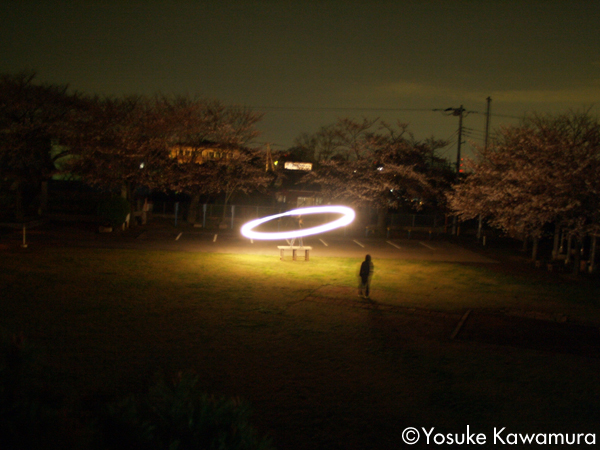
Mon
(Gate)
(Mar. 2008 at ARCUS STUDIO, Ibaraki)
Photo: Yosuke Kawamura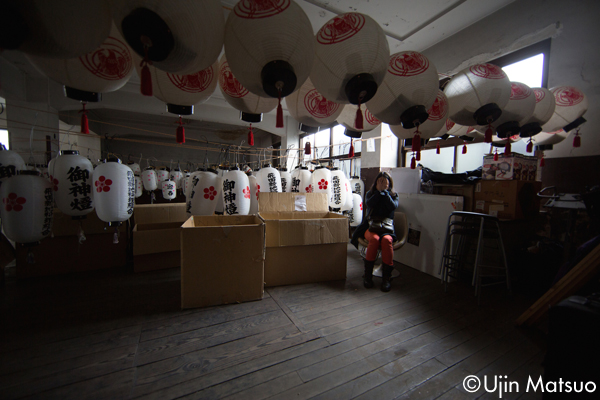
Photo: Ujin Matsuo
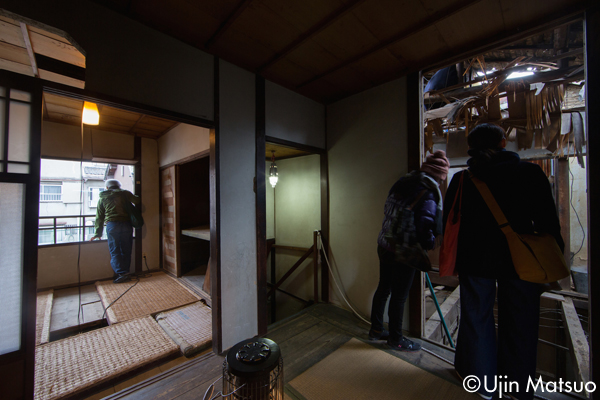

Photo: Yasutake Watanabe
(C)Breaker Project
(C)Breaker Project
Age0
(Feb. – Mar. 2014 at Sanno, Nishinari-ku, Osaka)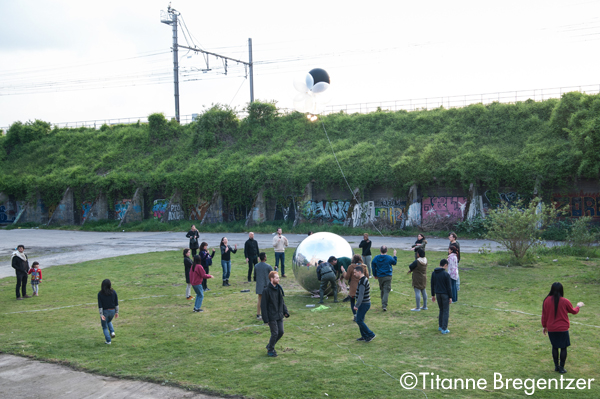
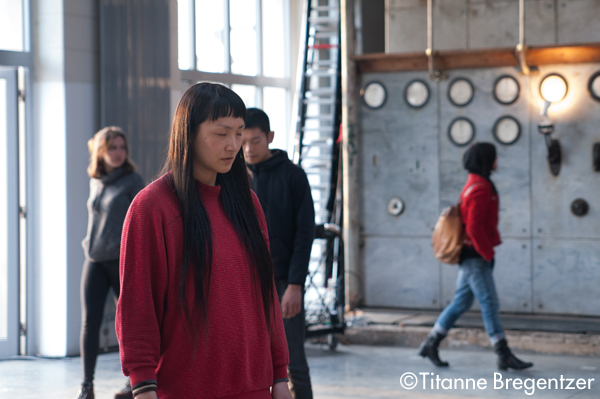
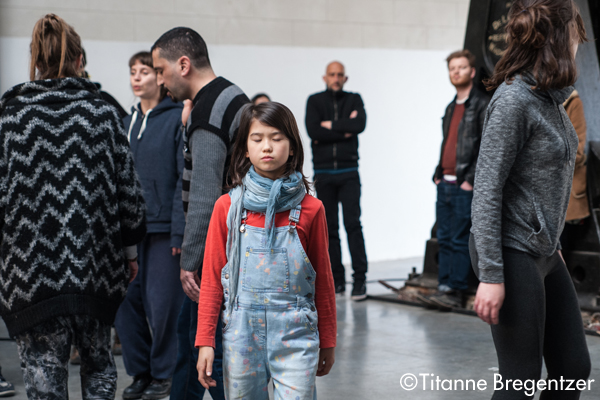
『Composite:Variations/Circle』
(May. 2017)
©Titanne Bregentzer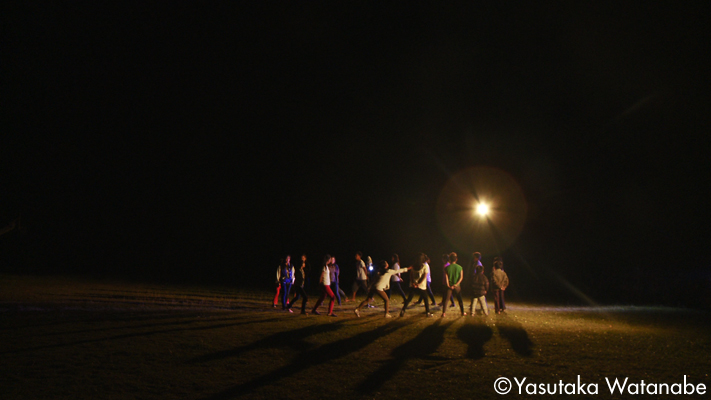
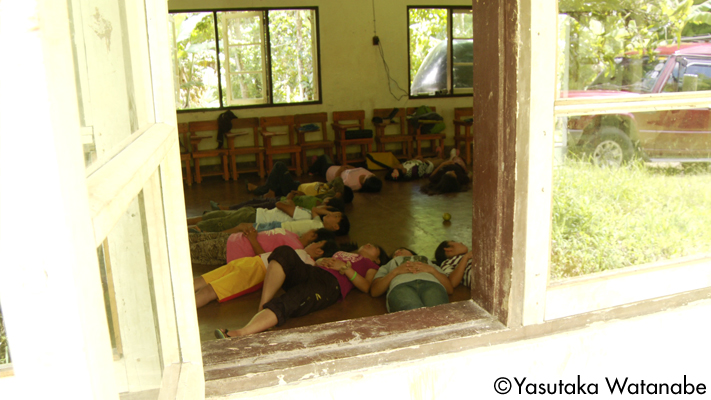
Workshop at Kayan, Mountain province, Philippines
(2014年10月)
Photo: Yasutake WatanabeRelated Tags


